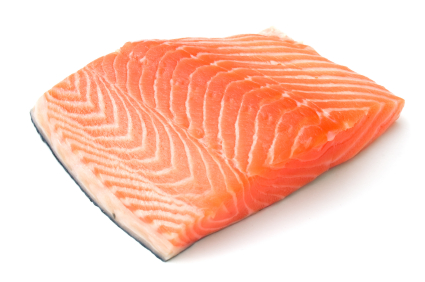 Down on the farm: most salmon consumed in the U.S. comes from industrial aquaculture. Ninety percent of the salmon consumed in the United States comes from factory-style farms–most of it imported. Until very recently, our biggest supplier was Chile–whose salmon industry is in a state of collapse, ravaged by a virus called “infectious salmon anemia.”
Down on the farm: most salmon consumed in the U.S. comes from industrial aquaculture. Ninety percent of the salmon consumed in the United States comes from factory-style farms–most of it imported. Until very recently, our biggest supplier was Chile–whose salmon industry is in a state of collapse, ravaged by a virus called “infectious salmon anemia.”
Like U.S. factory meat farms, Chile’s salmon cages veritably runneth over with antibiotics. Earlier this year, the Pew Environmental Group obtained some damning FDA documents about the Chilean salmon industry. The documents revealed that:
Three Chilean salmon farming companies, including the two largest producers of farmed salmon, used a number of drugs not approved by the U.S. government. These chemicals include the antibiotics flumequine and oxolinic acid and the pesticide emamectin benzoate. The documents further show that the farmed salmon containing residues of unapproved chemicals were destined for the U.S. market.
These operations are located in Chile, but Norwegian agribusiness giants largely control the trade. “The three largest producers in Chile have been Marine Harvest/Norway; Cermaq/Norway; and Aquachile/Chile,” Pew’s Andrea Kavanagh informs me. “These three represent more than 50% market share.”
Now Pew has obtained more information on the nature of the Chilean salmon industry. Note how Norwegian players are using much more in the way of harsh chemicals in their Chilean operations than they are in their domestic ones. I’ll be covering the salmon story more in the weeks to come; for now, here’s an excerpt from an email I received from Pew today:
Oceana Chile, a partner organization in the Pure Salmon Campaign, recently obtained data from the Chilean Ministry of Economy confirming excessive use of antibiotics in Chilean farmed salmon. According to the Minister’s report, Chile used 385,635 kg of antibiotics in 2007 while Norway only used 649 kg. This means that Chile used almost 600 times more antibiotics than the larger Norwegian industry. Chile in 2008 used 325,616 kg of antibiotics.
According to the data received by Oceana, there have been documented uses of at least four antibiotics not included on the U.S. Food and Drug Administration’s Approved Drugs list during the past two years. The Chilean records state that, in 2008 alone, the drugs Oxolinic Acid (25,325.26 kg), Amoxicillin (348.93 kg), Erythromycin (7,980.82 kg) and Flumequine (32,293.36 kg) were used to treat fish produced in Aquaculture facilities. Drugs that are not included on the U.S. FDA’s Approved Drugs list are not permitted to be imported to or sold in the U.S. market.
These staggering figures raise even more questions about the sustainability of the Chilean farmed salmon industry.
The non-therapeutic use of antibiotics in fish destined for food production raises concerns about possible antibiotic resistant bacterial infections in humans. Until the Chilean industry collapsed from disease outbreaks in 2008, Chile was the largest source of farmed salmon for American consumers.
Previously, evidence of banned chemicals in Chilean farmed salmon was limited to individual cases and assertions by scientists. The new data from the Chilean Ministry of Economy provide the first official industry-wide figures confirming extensive use of specific antibiotics, including quinolones, which are prohibited by U.S. law.



